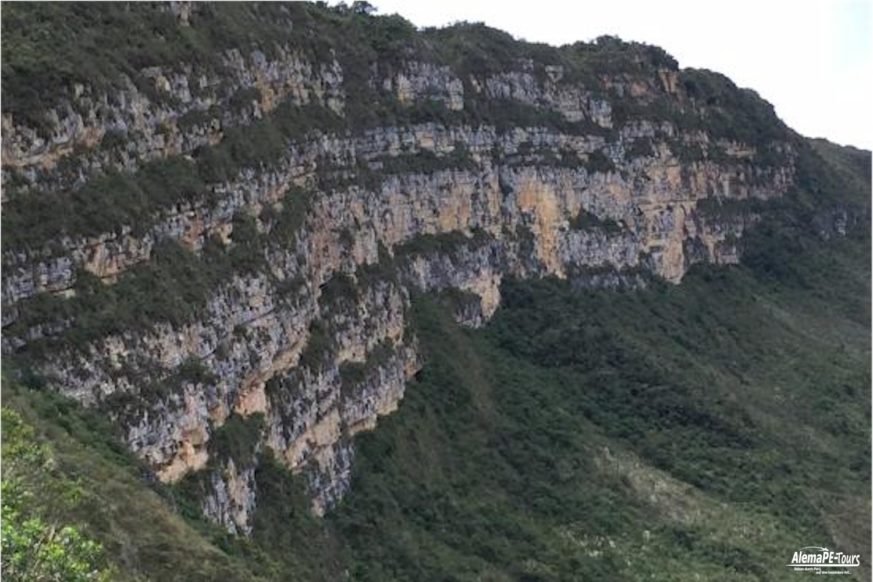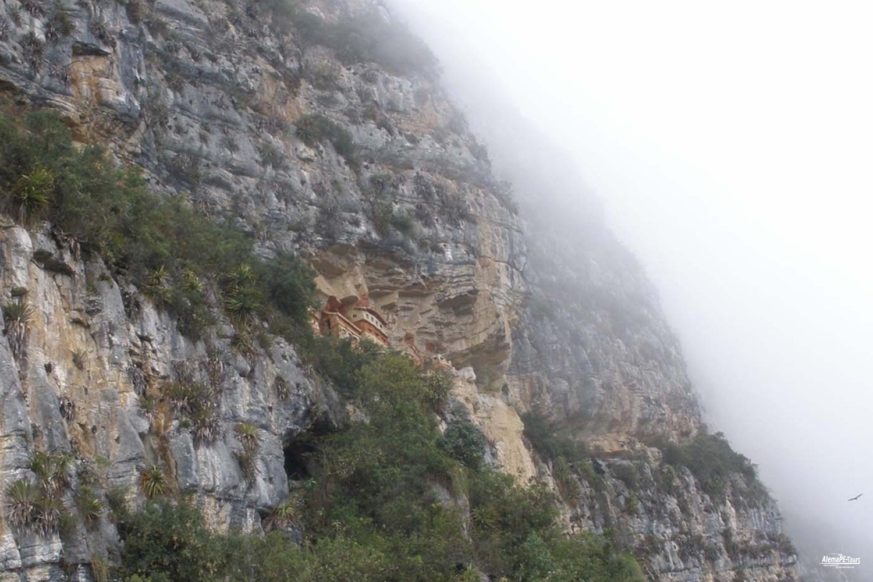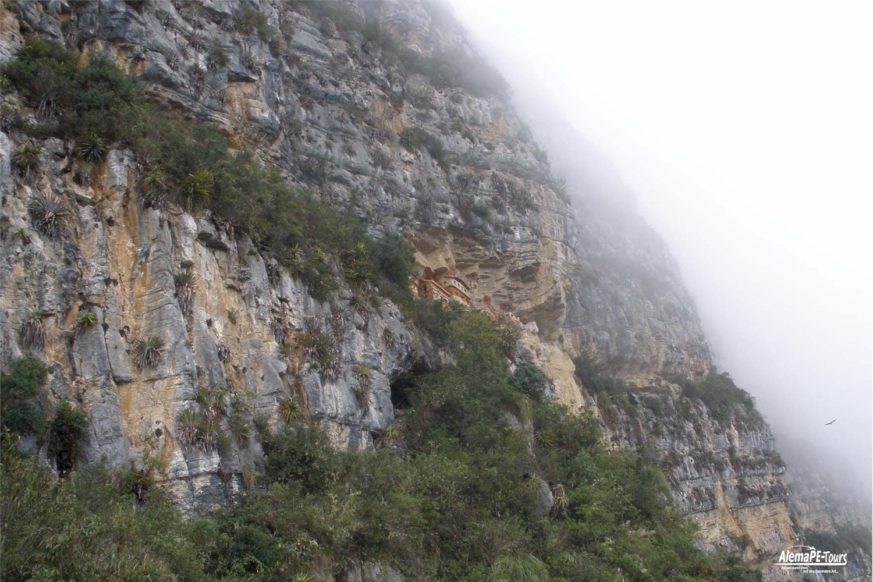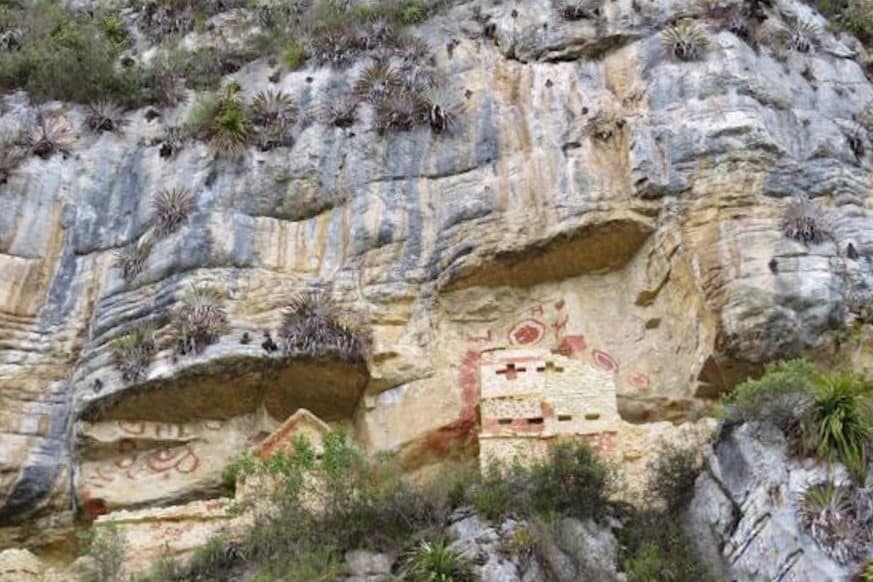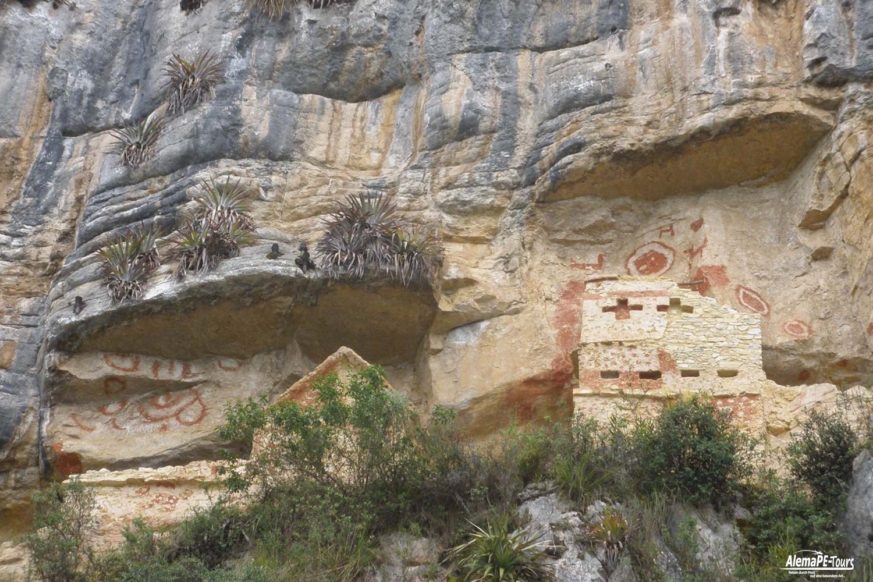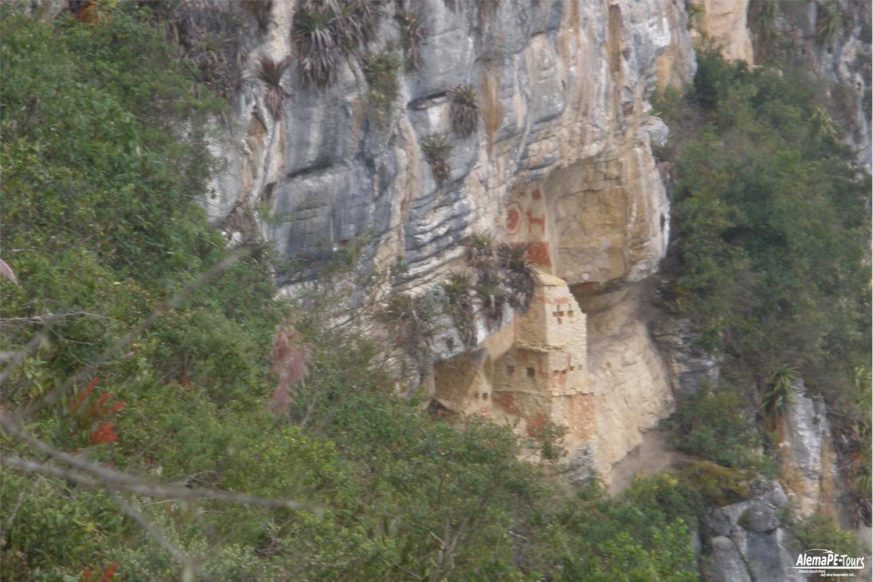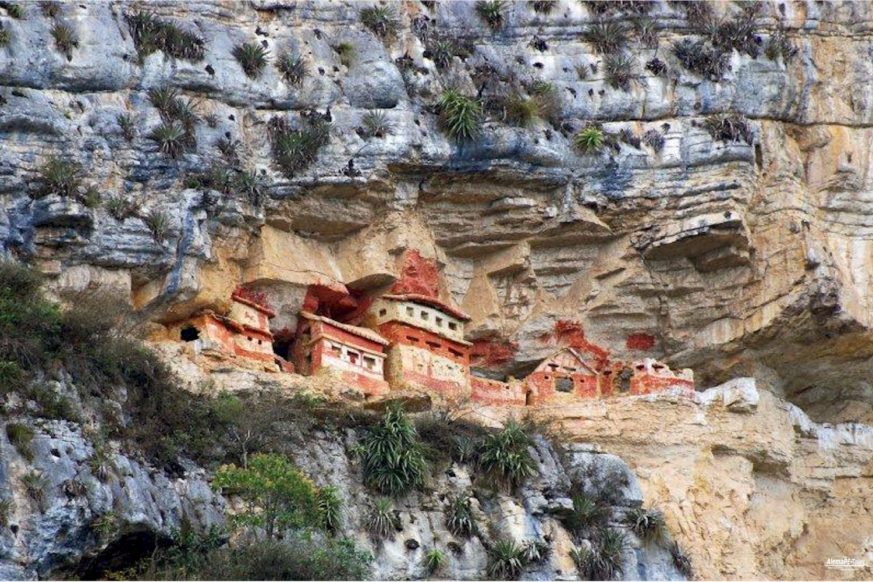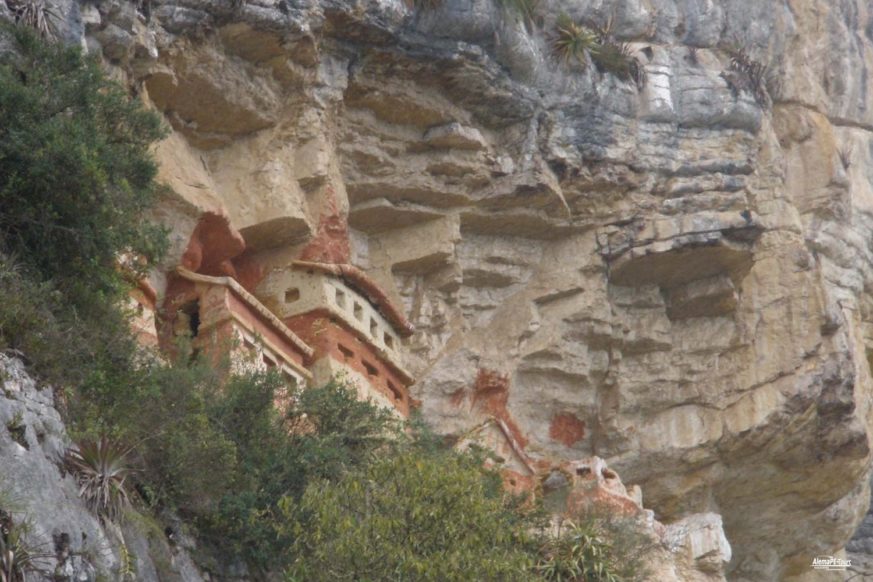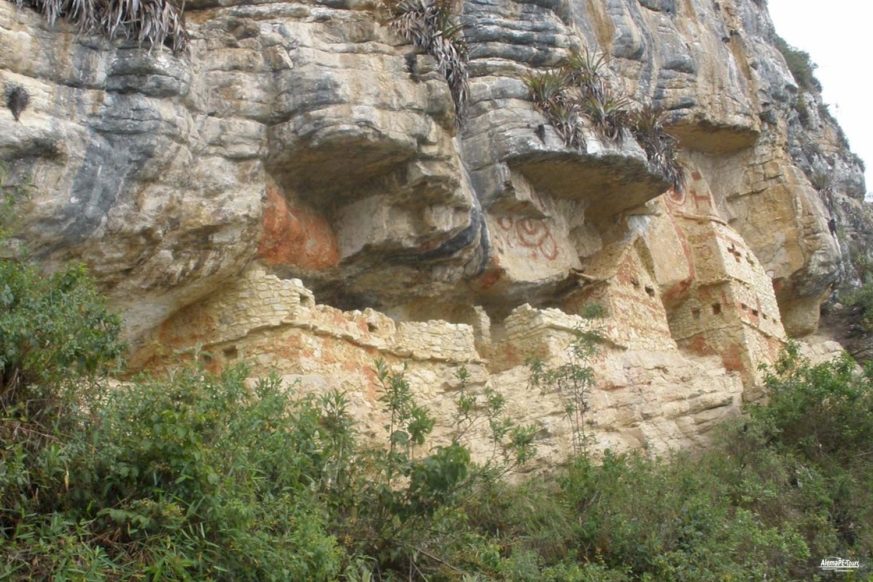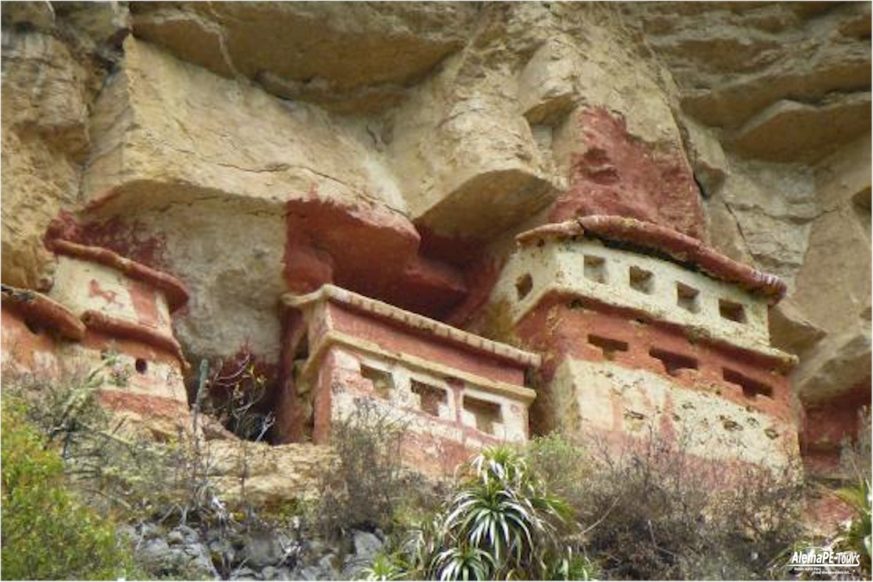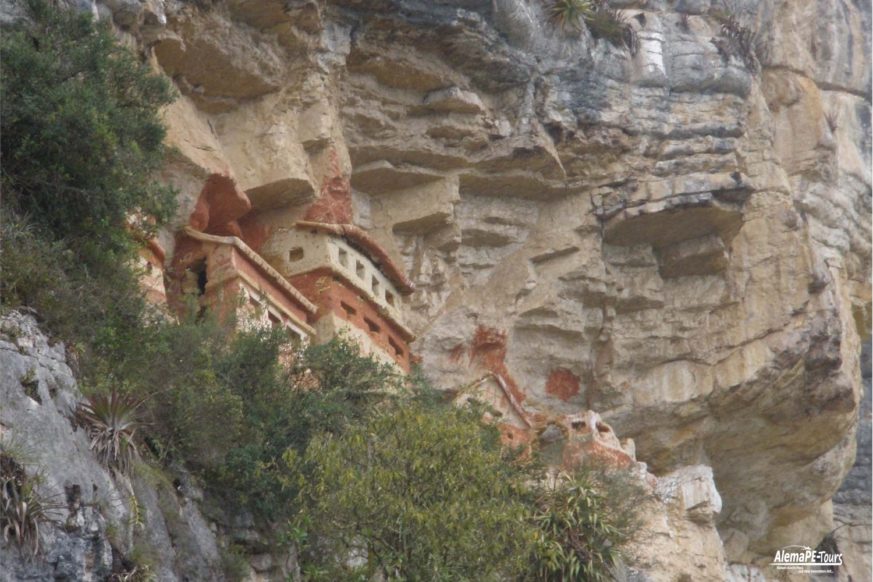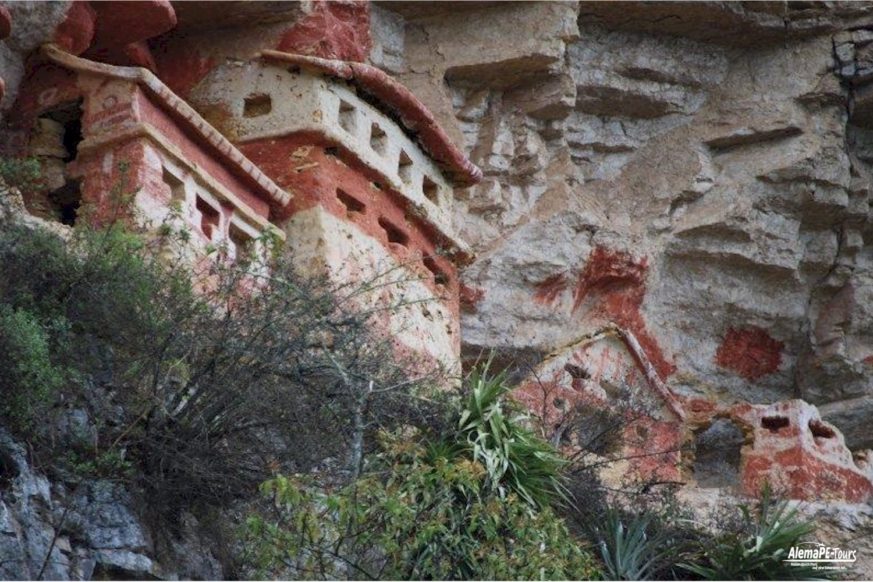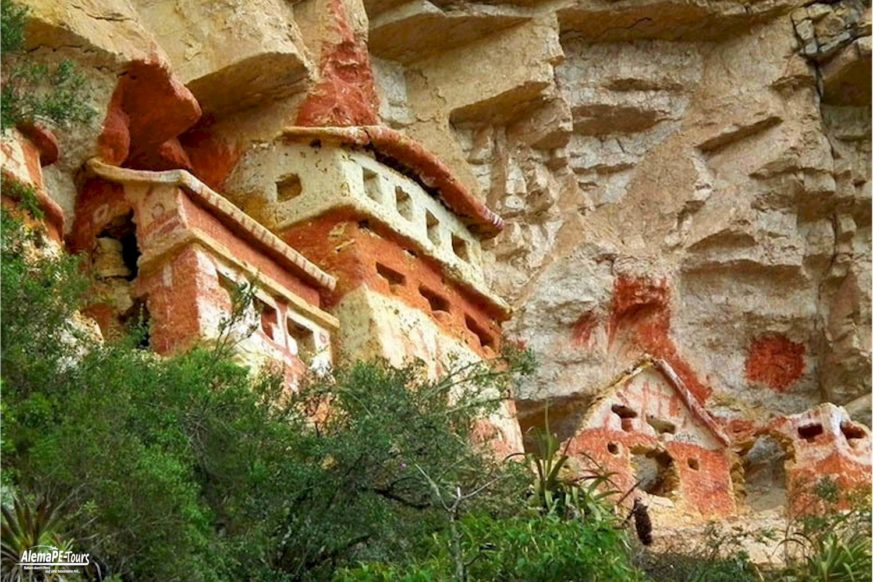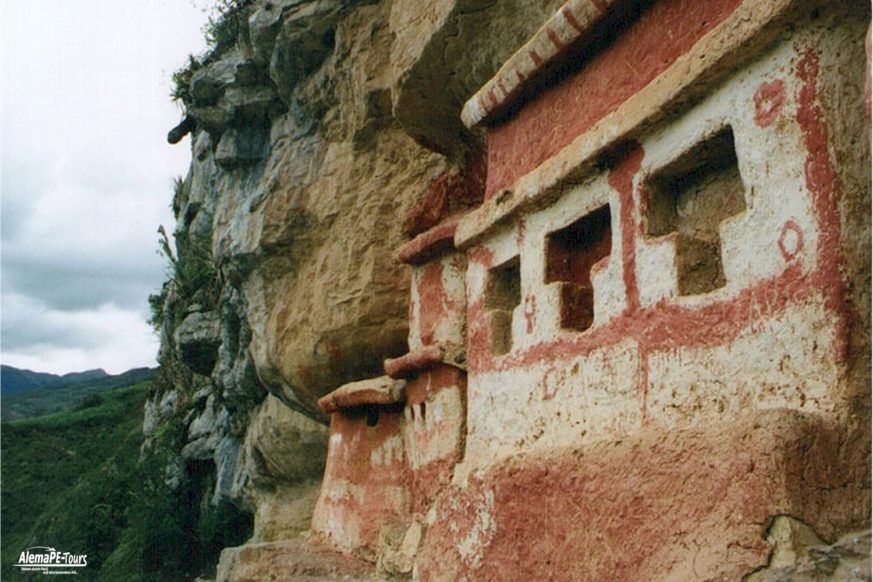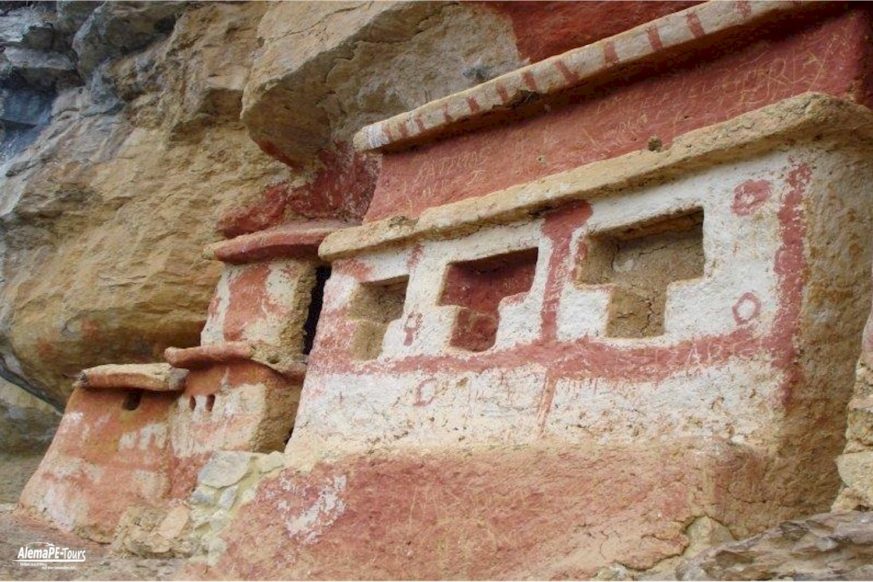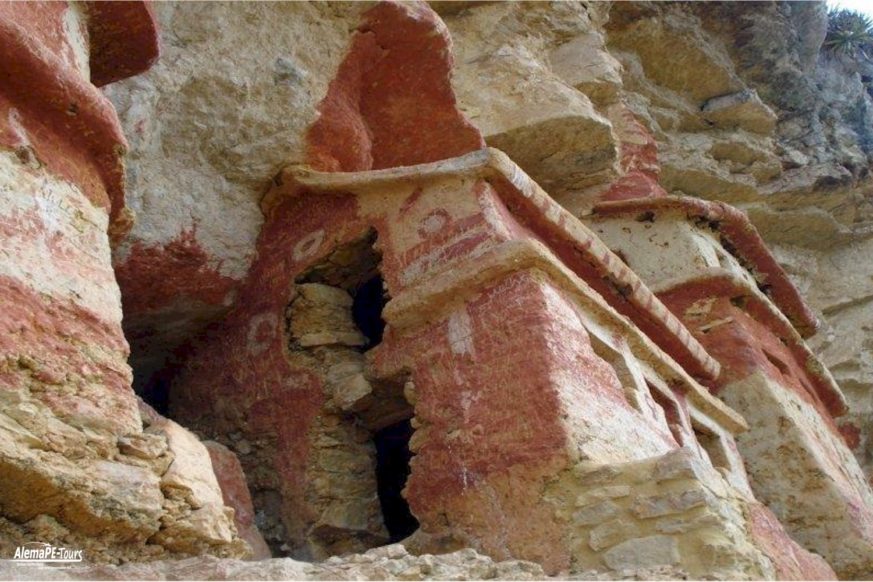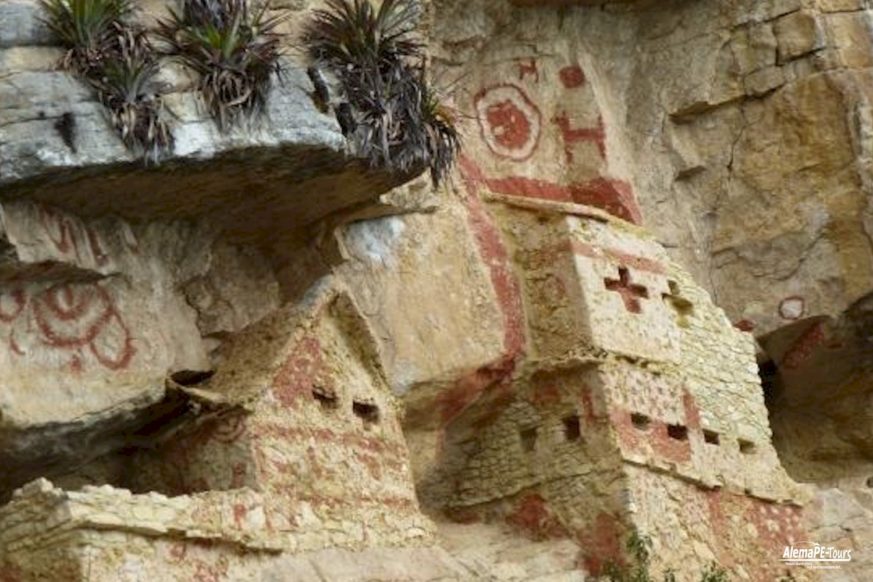REVASH – MAUSOLEUM OF THE CHACHAPOYAS
Tour Revash Mosaleum
1 D
The ruin complex or rather burial ground of Revash is located about 60 km south of Chachapoyas. The tombs are located at an altitude of 2,800 meters above sea level on a steep slope of the limestone formation of Cerro Carbon on the edge of the Alto Utcubamba Valley.
A particularly beautiful and very interesting destination for you are the rock tombs of Revash. In the region around the city of Chachapoyas, the Revash culture developed parallel to the tribe of the Mist Warriors, the Chachapoya. The age of the mummies found there are estimated by archaeologists to be around 800 years. The way to the ruins is very steep and the ascent takes about three hours, depending on how much condition you bring. The beautiful multi-colored buildings are located along a steep cliff edge. A special feature is the quite strange-looking gable roofs that tower over the painted mudstone walls. Not yet clearly recognizable are those in orange red to red paint on the buildings.
The mausoleums of Revash are architectural remains found in this region in the Amazon in Peru. In the last century Charles Wiener discovered the mausoleums of Utcubamba. The mausoleums of Revash in Santo Tomás were later examined by archaeologists Henry and Paule Reichlen, mainly because the roof of one of the mausoleums collapsed to shelter and protect the cultural remains.
Between 1983 and 1986, the antisuyo expeditions of the Amazon Archeology Institute identified and documented various groups of undiscovered mausoleums, such as those in Ochín and many others in the surrounding Revash areas. Other groups of sarcofagen also exist in La Petaca (Leimebamba). These particular sarcophagi are different from the ones mentioned above in their dikes, built as tiny houses on the rocks and looking like miniature villages.
After the remains of bones that still exist in the tombs, Revash’s mausoleums were not used individually. For this reason it is assumed that the mausoleums were used as collective residences. The pitched roofs are purely symbolic. Because they were sheltered from the cave, the roofs did not have to withstand rain or sun. For the builders, it was enough to imitate them and to support them with a mixture of sticks, reeds, and then cover them with the earthy clay and reed grasses.
The walls of the mausoleums were built with stones on clay mortar. Each of the mausoleums has a rectangular floor and one to two floors. Instead of a front door they have their access on the sides. The back has no wall because the mausoleums were built into the rock. Revash’s funeral homes have moldings with figures like cats, human figures, and two-tone circles on the walls, which are painted.
The walls of the mausoleums also include the artfully crafted niches in the walls. They consist of representations in the form of a T, crosses and rectangles. The symbols in cross are very similar in shape and finish to those of Virú’s coastal architecture. Its symbolic content is still unknown, although the cross-shaped motifs are identical to those of the side walls of the church in La Jalca, which according to local tradition come from the mythical Juan Oso the “little bear”.
The mausoleums of Chachapoyas have no cultural Influence from the incas, but they emerge relatively late in the records of peruvian archaeologists.
Itinerario
Departure at 8 am from the city of Chachapoyas to the parking lot, from where you will walk to the Revash mausoleums, arrival and visit to these mausoleums dating from the thirteenth century AD; explanation and photographic shots, then return to our vehicle to continue our tour to the community of Leymebamba, where we will visit the museum of this community, this museum houses more than 219 mummies in perfect condition and more than 2500 artifacts between ceramics, textiles, wood carving among others, which were used as offerings by the brave Chachapoya. At the end of our visit you return to your hotel in Chachapoyas at approximately 6:30 pm.
Price
USD 45.00
Tour-ID
REV001
Duration
1 D
Included
- Tourist transport in shared service to the attractions to visit.
- Tourist tickets of the places to visit.
- Lunches during the visit.
- Tourism Guide, permanent and personalized attention.
- First aid kit.
Not included
- Personal costs
- Alcoholic drinks.
- Dinners.
- National and international flights.
- Additional services.
- Horses.
- Tips (Optional)
Further information
IMPORTANT NOTE
- In Holy Week, national holidays, Raymi Llacta (June 1 to 10), employer parties (August 1 to 10) long holidays and end of the year this rate does not apply, prices for high season will be informed if your trip coincides with those dates.
- The walk to Gocta is recommended for adults and children over 10 years old who are in good physical condition.

